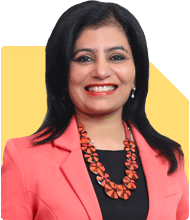Maxim Emmanuel | Answer |Ask -Follow
Soft Skills Trainer - Answered on Apr 30, 2024
An alumnus of the Xavier Institute of Management and Research, Mumbai, Maxim has over 30 years of experience in training young professionals and corporate organisations on how to improve soft skills and build interpersonal relationships through effective communication.
He also works with students and job aspirants offering career guidance, preparing them for job interviews and group discussions and teaching them how to make effective presentations.... more

Please suggest some reputed courses to pursue digital marketing as there are so many on internet that you get confused and even misled.
Go ahead and find out which suits your requirements and budget,depending on your place of residence!
You may like to see similar questions and answers below
Mayank Kumar | Answer |Ask -Follow
Education Expert - Answered on Jan 23, 2023
Mayank Kumar | Answer |Ask -Follow
Education Expert - Answered on Mar 24, 2023
Abhishek Shah | Answer |Ask -Follow
HR Expert - Answered on Sep 28, 2023
Maxim Emmanuel | Answer |Ask -Follow
Soft Skills Trainer - Answered on Jul 11, 2024
Archana Deshpande |116 Answers |Ask -Follow
Image Coach, Soft Skills Trainer - Answered on Jul 16, 2025
Nayagam P P |8910 Answers |Ask -Follow
Career Counsellor - Answered on Jul 16, 2025
Nayagam P P |8910 Answers |Ask -Follow
Career Counsellor - Answered on Jul 16, 2025
Archana Deshpande |116 Answers |Ask -Follow
Image Coach, Soft Skills Trainer - Answered on Jul 16, 2025
Nayagam P P |8910 Answers |Ask -Follow
Career Counsellor - Answered on Jul 16, 2025
Dr Nagarajan J S K |1810 Answers |Ask -Follow
NEET, Medical, Pharmacy Careers - Answered on Jul 16, 2025
Dr Nagarajan J S K |1810 Answers |Ask -Follow
NEET, Medical, Pharmacy Careers - Answered on Jul 16, 2025
Dr Nagarajan J S K |1810 Answers |Ask -Follow
NEET, Medical, Pharmacy Careers - Answered on Jul 16, 2025
Nayagam P P |8910 Answers |Ask -Follow
Career Counsellor - Answered on Jul 16, 2025
Dr Nagarajan J S K |1810 Answers |Ask -Follow
NEET, Medical, Pharmacy Careers - Answered on Jul 16, 2025






















